Table of Contents
- Introduction to Classic Preschool Toys
- Why Classic Preschool Toys Matter in Modern Education
- Types of Classic Preschool Toys
- Developmental Benefits of Traditional Play Materials
- Choosing the Right Classic Toys for Your Institution
- Wooden Toys: The Gold Standard
- How to Integrate Classic Toys into Your Curriculum
- Maintenance and Safety Guidelines
- Frequently Asked Questions
- Conclusion
Introduction to Classic Preschool Toys
Classic preschool toys represent the foundation of early childhood education, offering timeless value that transcends generations. These traditional learning tools have proven their worth in countless classrooms and homes worldwide, supporting children’s natural curiosity and developmental needs through open-ended, hands-on play experiences.
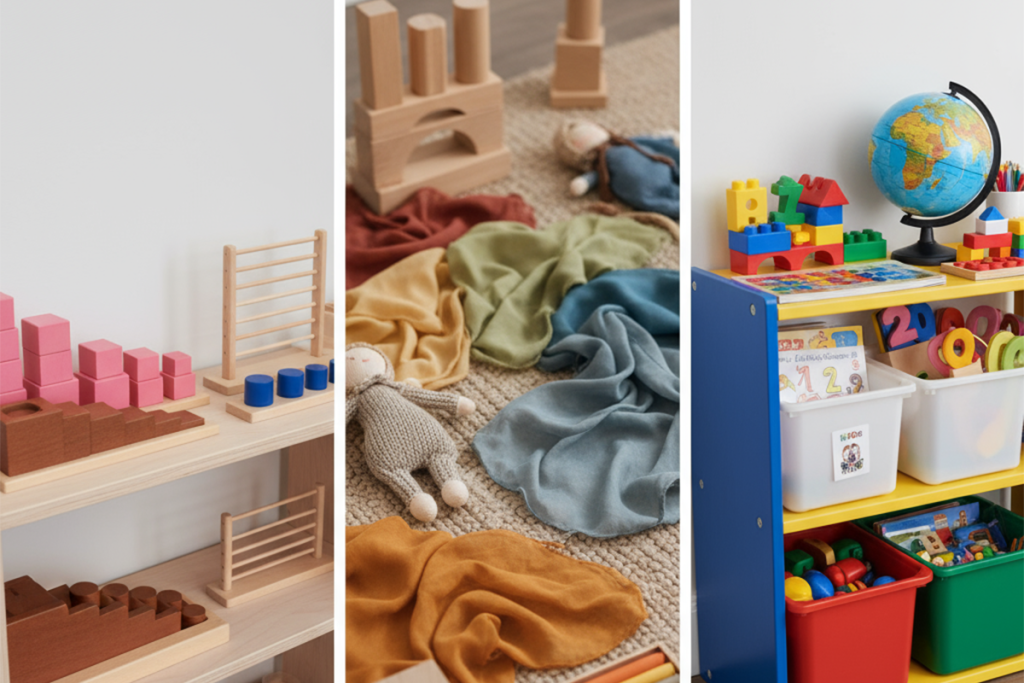
In today’s screen-dominated world, educators and parents alike are rediscovering the irreplaceable benefits of classic preschool toys. Unlike electronic alternatives, these tried-and-true playthings encourage imagination, foster problem-solving skills, and promote healthy physical development without overwhelming young minds with excessive stimulation.
Research from the National Association for the Education of Young Children (NAEYC) confirms that simple, well-designed toys provide the best developmental outcomes for preschoolers. These findings align with what early childhood educators have known for decades: quality matters more than quantity when it comes to educational play materials.
Why Classic Preschool Toys Matter in Modern Education
The Enduring Value of Traditional Play
Classic preschool toys have maintained their relevance because they address fundamental aspects of child development that remain constant regardless of technological advancement. These toys support cognitive development, fine motor skills, and social-emotional learning through engaging, age-appropriate activities.
Key advantages include:
- Open-ended play potential: Classic toys like building blocks, shape sorters, and stacking rings can be used in countless ways, growing with the child
- Sensory engagement: Natural materials provide tactile experiences that plastic alternatives cannot replicate
- Durability: High-quality traditional toys withstand years of enthusiastic use
- Safety: Simple designs minimize choking hazards and eliminate concerns about electronic components
- Environmental sustainability: Wooden and natural material toys offer eco-friendly alternatives
Evidence-Based Benefits
Studies published in the Early Childhood Education Journal demonstrate that children exposed to classic, open-ended toys show enhanced problem-solving abilities and creative thinking skills. These toys encourage children to think independently rather than following prescribed play patterns dictated by electronic features.
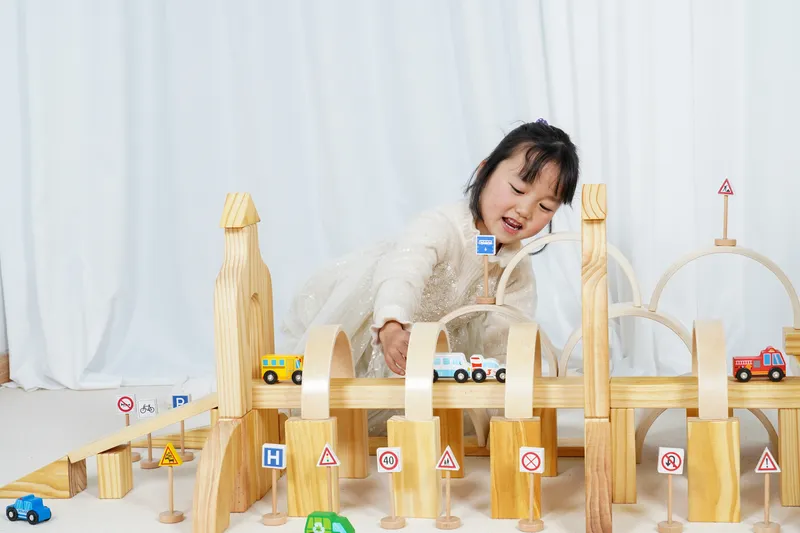
Types of Classic Preschool Toys
1. Stacking & Sorting Toys Classic Preschool
Stacking and sorting toys represent some of the most foundational learning tools available. These classic preschool toys help children understand spatial relationships, develop hand-eye coordination, and grasp basic mathematical concepts like size, sequence, and quantity.
Popular variations include:
- Rainbow stackers
- Nesting cups
- Shape sorters
- Graduated cylinders
- Peg boards
According to developmental specialists, children typically begin stacking between 13-15 months, marking an important cognitive milestone. As they progress, these activities support increasingly complex problem-solving skills.
2. Building Blocks and Construction Sets
Wooden blocks remain the quintessential classic preschool toy, offering unlimited creative possibilities. Unit blocks, which are proportionally sized fractions of each other, teach mathematical concepts organically through play.
3. Board & Card Games Classic Preschool
Age-appropriate board games introduce preschoolers to rule-following, turn-taking, and gracious winning and losing—essential social skills for school readiness.
4. Action Figures Classic Preschool
Simple, well-designed action figures and play figures support imaginative storytelling and role-play scenarios that help children process their experiences and emotions.
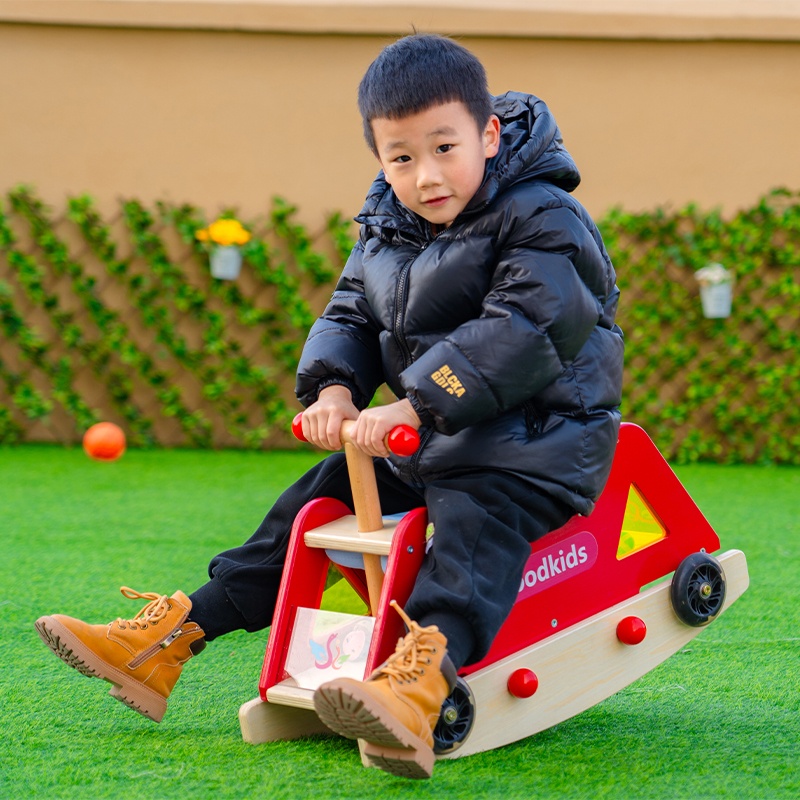
5. Toy Trains Classic Preschool
Wooden train sets offer exceptional play value, combining construction, storytelling, and fine motor development in one engaging activity.
6. Dolls Classic Preschool
Soft-bodied dolls and simple doll accessories support nurturing play and emotional development for all genders.
7. Stuffed Animals Classic Preschool
High-quality plush toys provide comfort while encouraging empathy and caregiving behaviors.
8. Manipulative Toys
Threading beads, lacing cards, and similar manipulatives specifically target fine motor skill development essential for writing readiness.
Developmental Benefits of Traditional Play Materials
Cognitive Development
Classic preschool toys excel at promoting cognitive growth through hands-on exploration. When children manipulate wooden blocks or solve shape sorter puzzles, they actively engage in problem-solving and critical thinking.
Cognitive skills enhanced:
- Spatial reasoning
- Cause-and-effect understanding
- Pattern recognition
- Memory development
- Logical thinking
Fine Motor Skills
Grasping, stacking, threading, and manipulating toys strengthens the small muscles in children’s hands and fingers—crucial preparation for handwriting and other precise movements.
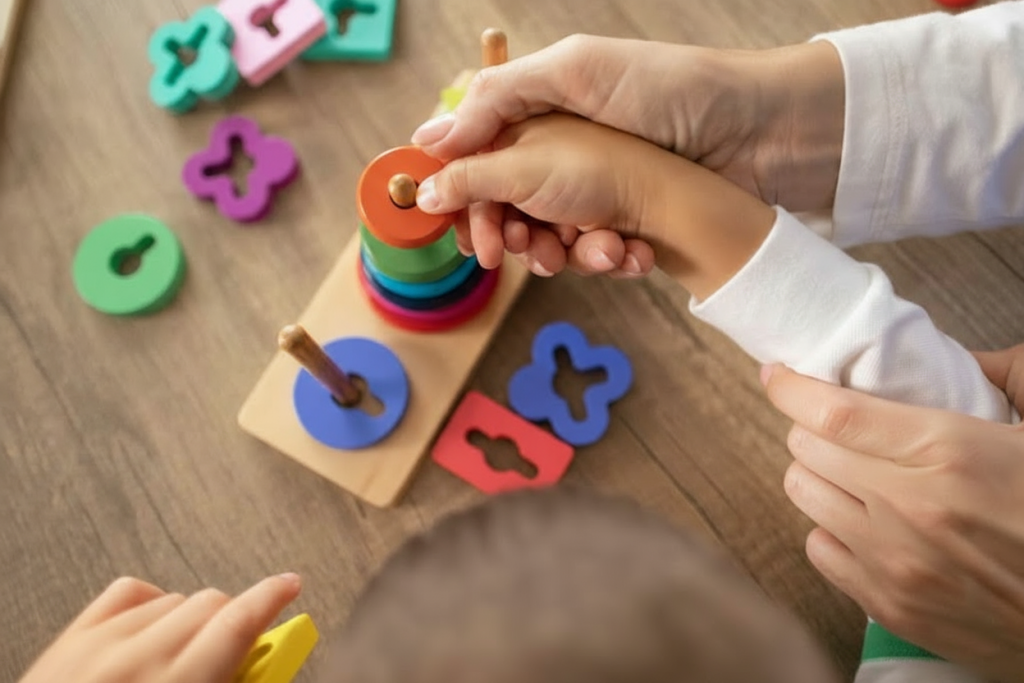
Social-Emotional Learning
Cooperative play with classic toys teaches children to share, negotiate, communicate, and work collaboratively—foundational skills for lifelong success.
Language Development
Open-ended toys naturally encourage narrative creation and vocabulary expansion as children describe their play scenarios and engage in pretend play dialogues.
Sensory Integration
Natural materials like wood provide rich tactile experiences that support sensory processing development. The weight, texture, and temperature of wooden toys offer sensory feedback that plastic alternatives cannot match.
Choosing the Right Classic Toys for Your Institution
Key Selection Criteria
When selecting classic preschool toys for kindergartens or daycare centers, educational institutions should consider:
- Age appropriateness: Match toys to developmental stages
- Safety certifications: Ensure ASTM, CPSIA, or equivalent safety compliance
- Durability: Choose toys built to withstand intensive institutional use
- Educational value: Prioritize toys that support multiple learning domains
- Versatility: Select materials that can be used in various ways
- Cultural inclusivity: Ensure toy selection reflects diverse family structures and backgrounds
Quantity Considerations
Experts recommend having enough toys to prevent conflict but not so many that children feel overwhelmed. For a classroom of 20 children, consider:
- 100-150 wooden blocks
- 4-6 complete stacking/sorting sets
- 8-10 puzzles at various difficulty levels
- 2-3 sets of construction materials (different types)

Wooden Toys: The Gold Standard in Classic Preschool Materials
Why Wooden Educational Toys Excel
Wooden toys represent the premier choice for educational institutions seeking high-quality classic preschool toys. Their advantages extend beyond nostalgia to encompass practical, developmental, and environmental benefits.
Safety Advantages
Unlike plastic alternatives, quality wooden toys:
- Contain no BPA, phthalates, or other harmful chemicals
- Don’t break into sharp, dangerous pieces
- Feature naturally antibacterial properties
- Lack small battery compartments that pose choking hazards
The Consumer Product Safety Commission periodically recalls plastic toys containing lead or other toxins, while properly finished wooden toys remain consistently safe.
Environmental Sustainability
Wooden toys sourced from responsibly managed forests offer a sustainable alternative to petroleum-based plastic toys. They:
- Biodegrade naturally at end-of-life
- Require less energy to manufacture
- Don’t contribute to microplastic pollution
- Can be passed down through generations
Superior Sensory Experience
Wood provides unique tactile feedback that supports sensory development. Its natural weight, texture, and warmth create rich sensory experiences essential for young children’s neurological development.
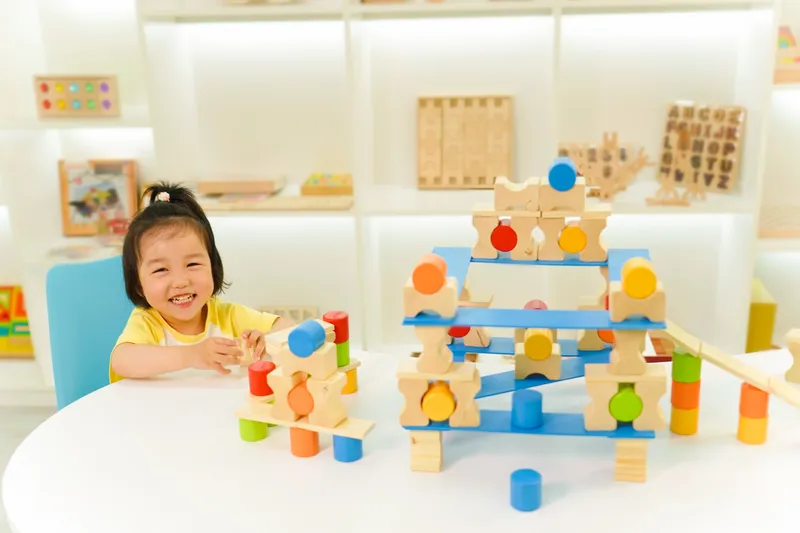
Longevity and Value
While wooden toys may have higher initial costs, their exceptional durability makes them more economical over time. A quality wooden block set can serve multiple generations of students, whereas plastic alternatives typically need replacement every few years.
How to Integrate Classic Toys into Your Curriculum
Creating Effective Learning Centers
Organize classic preschool toys into dedicated learning centers that support specific developmental goals:
Block Center
- Unit blocks of various sizes
- Figures and vehicles for imaginative play
- Photos of buildings and structures for inspiration
Manipulative Center
- Shape sorters
- Stacking toys
- Threading and lacing materials
- Puzzles at varying difficulty levels
Dramatic Play Center
- Simple dolls and accessories
- Play kitchen materials
- Dress-up items
- Toy vehicles and action figures
Structured vs. Free Play Balance
Effective early childhood programs balance teacher-guided activities with open-ended free play. Classic toys excel in both contexts, offering flexibility that electronic toys cannot provide.
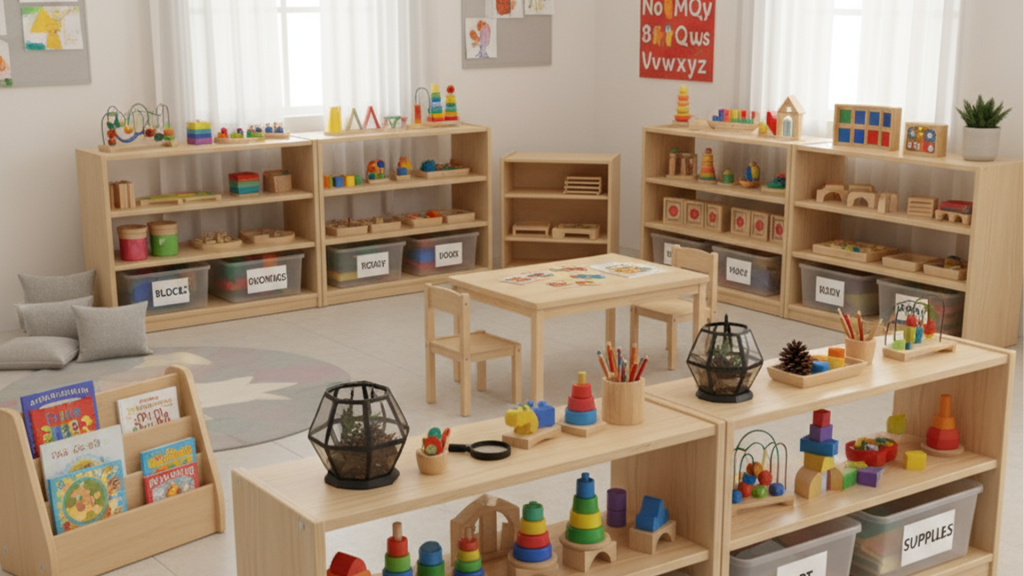
Rotation Strategies
Prevent toy fatigue by rotating materials every 2-3 weeks. This approach:
- Maintains novelty and interest
- Allows thorough cleaning and inspection
- Reduces classroom clutter
- Extends the perceived value of your toy collection
Maintenance and Safety Guidelines
Regular Inspection Protocols
Implement weekly toy inspections to identify:
- Splinters or rough spots on wooden items
- Loose parts that could detach
- Damage that creates sharp edges
- Wear that compromises structural integrity
Cleaning Best Practices
Maintain hygiene without damaging toys:
- Wipe wooden toys with mild soap and damp cloth
- Dry thoroughly to prevent warping
- Avoid submersion in water
- Use food-safe mineral oil to maintain wood finish
- Disinfect high-touch items daily
Storage Solutions
Proper storage extends toy lifespan:
- Keep wooden toys in climate-controlled environments
- Use open shelving for easy access and visibility
- Label storage areas with pictures and words
- Avoid damp basements or direct sunlight
Color-Coded Learning: Red, Blue, Green, and Pink Classic Preschool Toys
The Role of Color in Learning
Color serves as a fundamental learning tool in early childhood education. Classic preschool toys in primary colors—red classic preschool toys, blue classic preschool toys, and green classic preschool toys—help children develop color recognition skills essential for later academic success.
Gender-Neutral Toy Selection
Modern educators recognize that all children benefit from exposure to the full color spectrum. While pink classic preschool toys remain popular, progressive programs emphasize that toy preferences should reflect individual interests rather than gender stereotypes.
Best practices include:
- Offering toys in diverse colors
- Avoiding gendered marketing language
- Modeling inclusive play for all children
- Selecting neutral color palettes alongside traditional primaries
Where to Find Quality Classic Preschool Toys
Walmart Classic Preschool Toys vs. Specialized Suppliers
While retailers like Walmart offer classic preschool toys for convenient household purchasing, educational institutions typically benefit from working directly with manufacturers or educational supply specialists who understand institutional needs.
Target Classic Preschool Toys and Mainstream Options
Mainstream retailers provide accessible entry points for families, but professional educators should seek suppliers offering:
- Bulk pricing
- Institutional warranties
- Replacement part availability
- Educational consultation services
Online Classic Preschool Toys Shopping
Digital purchasing offers advantages:
- Broader selection
- Competitive pricing
- Convenient delivery
- Access to customer reviews

Finding Classic Preschool Toys Nearby
Local educational supply stores offer the advantage of examining toys before purchase, though selection may be limited compared to specialized manufacturers.
Reviews Classic Preschool Toys: What Educators Say
Professional Recommendations
Educational professionals consistently praise classic preschool toys for their versatility and developmental appropriateness. Teachers report that children engage more deeply with traditional toys compared to electronic alternatives, sustaining attention for longer periods and demonstrating greater creativity in their play.
Award-Winning Recognition
Many classic wooden toy manufacturers have received prestigious awards including:
- Teachers’ Choice Awards
- Parents’ Choice Awards
- Tillywig Brain Child Awards
- Good Housekeeping Best Toy Awards
Used Classic Preschool Toys vs. New: Making Informed Decisions
When Used Toys Make Sense
Budget-conscious programs sometimes consider used classic preschool toys. This approach works when:
- Items show minimal wear
- Safety integrity remains intact
- Toys come from known, trusted sources
- Thorough cleaning and sanitization is possible
Prioritizing New Classic Preschool Toys for Sale
Educational institutions should prioritize new classic preschool toys for:
- Initial classroom setup
- Items requiring hygiene (teethers, mouth toys)
- Safety-critical items
- Components needing complete sets
Frequently Asked Questions
What makes a toy “classic”?
Classic toys are timeless designs that have proven their educational value across generations. They typically feature simple, open-ended play potential without batteries or electronic components.
Are wooden toys safer than plastic?
Quality wooden toys from reputable manufacturers generally contain fewer harmful chemicals than plastic alternatives and don’t break into sharp pieces. However, always verify safety certifications regardless of material.
How many toys does a preschool classroom need?
A well-stocked preschool classroom typically requires 150-200 individual play items across various categories, with exact quantities depending on enrollment and available space.
What’s the best age for introducing building blocks?
Large, lightweight blocks can be introduced around 12 months, with smaller unit blocks appropriate from age 2. Children continue developing block play skills through elementary school.
How do I clean wooden toys?
Wipe with damp cloth and mild soap, dry immediately, and periodically treat with food-safe mineral oil. Avoid soaking or harsh chemicals.
Should I choose Montessori toys or traditional toys?
Many classic preschool toys align with Montessori principles. Look for natural materials, realistic designs, and self-correcting features regardless of specific labeling.
Conclusion
Classic preschool toys remain indispensable tools in modern early childhood education. Their proven ability to support comprehensive child development—from cognitive and motor skills to social-emotional learning—ensures their continued relevance regardless of technological trends.
For educational institutions seeking the highest quality play materials, wooden classic preschool toys represent the optimal investment. Their durability, safety, environmental sustainability, and superior developmental benefits justify their place in every kindergarten, daycare, and preschool classroom.
When partnering with experienced manufacturers specializing in educational wooden toys, institutions gain access to not just products, but comprehensive support for creating enriching learning environments. Quality classic preschool toys transform ordinary playrooms into dynamic spaces where young learners thrive.

Ready to Enhance Your Educational Environment?
Whether you’re establishing a new preschool, refreshing your existing classroom, or seeking reliable suppliers for your educational distribution business, choosing the right classic preschool toys makes all the difference.
Contact us today to discuss your institution’s specific needs and discover how our comprehensive range of wooden educational toys can support your students’ learning journey.
Request an institutional quote | Download our complete catalog